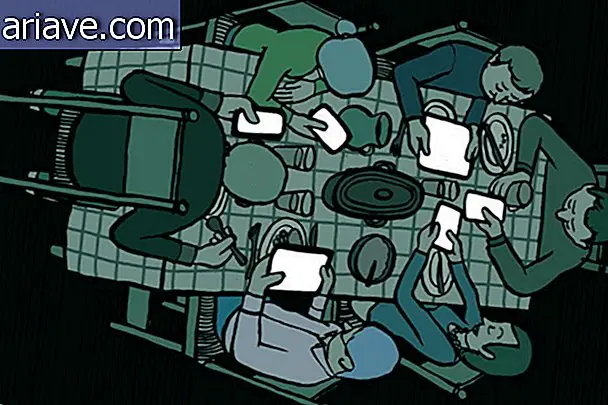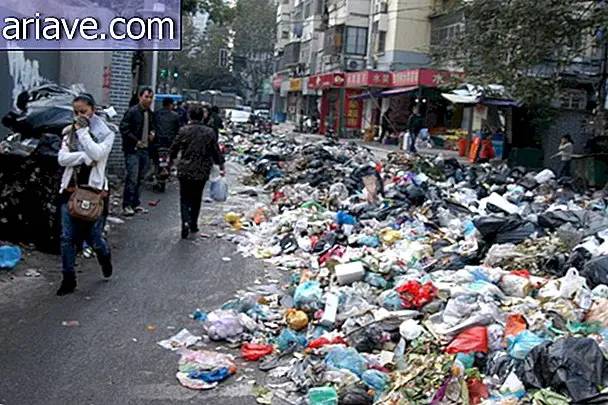Scientists announce that there is one more continent on Earth!
As most of us have learned in high school, there are six continents on our planet: African, Asian, European, American, Oceania and Antarctic. There are also those who consider our world to be divided into Asia, Africa, Europe, Australia (rather than Oceania), North America and South America - a division that was born after the construction of the Panama Canal.
There is also the division adopted by geologists, which group Europe and Asia into a single supercontinent, Eurasia, and count six geological continents in total. But no matter what your favorite division is - there are others besides the three we mentioned! - Be aware that a group of researchers said they discovered one more continent, so you may have to count one more on your list.
Another!
According to Dave Mosher of the Business Insider portal, a group of 11 researchers recently presented a study in which they claim that there is one more continent besides those we all know, one they named Zealand - without the "Nova" in front. .

According to Dave, geologists have carried out an exhaustive analysis of satellite data and conducted tests on rock samples collected from the “continent” and concluded that New Zealand and New Caledonia - an archipelago that is part of France and is located in Oceania., 1, 500 kilometers east of Australia and 2, 000 kilometers north of New Zealand - form a single continent.
Scientists argue that both New Zealand and New Caledonia form a single mass of 4.9 million square kilometers, and that this huge continental crust would have a different composition from Australia. They further explained that this was not a conclusion they came to now, suddenly. This proposal has been around for some time, but scientists have not had the necessary data to prove their hypothesis.
Old proposal
The term “Zealand” originated in 1995 and was coined by a University of California geophysicist named Bruce Luyendyk - who did not participate in the study of the new continent. He used this name to refer to the area encompassing New Zealand, New Caledonia, and a portion of fragments of earth's crust that are now submerged but once were part of the supercontinent Gondwana, which broke up millions of years ago.

The geologists of the current study drew on Luyendyk's idea and reevaluated the data collected from the region considering four criteria for classifying a “piece of rock” as a continent. The first would be if it has high altitude relative to the oceanic crust, and the second if its crust is thicker and less dense than the surrounding ocean floor.
The third criterion would be whether its area is large enough to distinguish it from a microcontinent or continental fragment, and the fourth if there are three types of rock - igneous (or volcanic), metamorphic (those created by heat). and pressure) and sedimentary (those that are the product of erosion). For it follows that the new continent fulfills all the attributes.
Zealand without the “Nova”
In fact, previous studies had already concluded that New Zealand and New Caledonia met the first three criteria above, as both consist of large islands, are geologically diverse and consist of a thicker and less dense crust than the bottom. around you. However, scientists believed that the region was all fragmented.

The current study was based on new elevation and gravity maps that revealed that, in fact, the entire region forms one continental mass only. With this material in hand, geologists have concluded that over millions of years, the region's tectonic plates have made Zealand (mainland) thin, stretch and submerge so that only 5% are visible.
Geologists have also determined that the continent is separated from Australia by a mere 25-kilometer piece of land called “Cato Trough” and is divided into two segments, the north and south, the Australian Plate and the Pacific Plate.
Because of all this, the region seems to be all fragmented, but geologists have pointed out that there are parts of India, Central America and Arabia that also have similar divisions - and yet they are no longer considered part of larger continents.
Moreover, analysis of the rock samples revealed that the new continent appears to have the same composition as the continental crust that was part of Gondwana, and that it migrated similarly to Oceania and Antarctica. And, with dimensions similar to what geologists have called “Greater India” - encompassing Southeast Asia and Southern Asia - the officialization of the new continent would have enormous economic and geopolitical implications.
Implications
According to Luyendyk, the geophysicist who proposed calling the region encompassing New Zealand, New Caledonia and other islands of Zealand, the researchers proposing the new division of continents are brilliant scientists who have gathered a solid collection of evidence. Thus, in Luyendyk's opinion, other geologists are quite likely to accept their conclusions. And what consequences would this have on our lives?

For the Brazilians, not many, besides having to memorize one more continent. But for New Zealander and New Zealand, it can do a lot! There are UN treaties that speak specifically of continental shelves as boundaries and determine the locations from which natural resources can be exploited. And can there be billions and billions of dollars of fossil fuels and minerals lurking in the region, $ abe?











